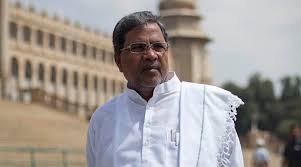Lucknow, Apr 29: Tablighi Jamaat members, who got cured of COVID-19, have been asked by their organisation to donate their plasma for treatment of other coronavirus-infected patients, a move that the outfit thinks will help it shed its “villain” tag.
"Maulana Saad, in an open letter on April 21 to all Jamaatis who have recovered from the coronavirus (infection), has appealed them to donate their plasma to help others. The message has reached all the members," Maulana Anees Ahmad Nadvi, the manager of Tablighi Jamaat’s Lucknow branch, told PTI PTI on Wednesday.
"As per the Health Department data, over 50 per cent of corona patients are Jamaatis. Among them those who have recovered are being contacted and all of them are ready to donate their plasma," claimed Nadvi.
"We have till now contacted 400 Jamaatis. In the entire country, those who have recovered are also giving their plasma. Markaz has given instructions that no one should be left from donating plasma," he said. "Jamaatis are not doing any favour to anyone by giving their plasma.
This is a humanitarian step. This is true that Jamaatis are being presented as villains after coronavirus spread, but Maulana Saad has asked us to forgive those doing this," he said. Tablighi Jamaat leader Maulana Saad Kandhalvi is on the run after an FIR was registered against him by the Delhi police for organising a religious gathering in March this year despite restrictions to combat the coronavirus spread.
With some plasma therapy trial results rekindling hopes of it being a likely cure for COVID-19, the Uttar Pradesh government too had begun contracting patients cured of it for plasma donation, but the move was suspended after the Union Health Ministry on Tuesday said the therapy was only at an experimental stage and there was no evidence yet to support that it can be used as treatment for COVID-19.
Uttar Pradesh Surveillance Officer, Dr Vikasendu Agarwal, said all those who have recovered from coronavirus, including Jamaatis, were being contacted for plasma donation, but the move has been suspended after the Centre’s statement on the issue.
Refusing to divulge the number of cured Jamaatis, he said "We were contacting them. They are not different from us. We were contacting all our patients and asking them that they could donate if they find it appropriate, as it would help other patients." "All of those contacted by us are ready for giving plasma," he said.
Chief Medical Officer, Lucknow, Dr Narendra Agarwal said all 28 Jamaatis, who were admitted in KGMU were contacted to donate their plasma and all of them agreed. "A proposal in this regard has been sent to the government.
After approval, their plasma will be taken," he said. With the plasma therapy gaining a lot of traction as a possible cure for coronavirus, the Union Health Ministry on Tuesday clarified that it is at an experimental stage and there is no evidence yet to support that it can be used as treatment for COVID-19. Till the effectiveness of this mode of treatment is scientifically proven, its application except for research and clinical trial is illegal, Joint Secretary in the Ministry of Health Lav Agarwal said.
Dr Vikasendu said after the Centre's clarification contacting people for plasma donation has been put on hold. A further step will be taken on decision of KGMU which is working on plasma therapy here, he added.
 The regional news channels began to target the CM the moment he left for Belgium to visit his ailing son, who was in an extremely critical condition since Tuesday.
The regional news channels began to target the CM the moment he left for Belgium to visit his ailing son, who was in an extremely critical condition since Tuesday.



Comments
Media has shown its real face. I express my deep condolence to Hon'ble CM on death of his beloved son. May God bless our CM with patience. Media is really sold itself as a prostitute. Shame on you guys.
Shame on Indian Media
Instead the press need to reveal the details of the trip...what kind of dance party in belgium?....alcoholism is the leading risk for pancreatitis.....why would he go to a party with 4 friends leaving his wife and kids?...
ruthless, extremely sick journalism, watching tv news is waste of times...
Add new comment